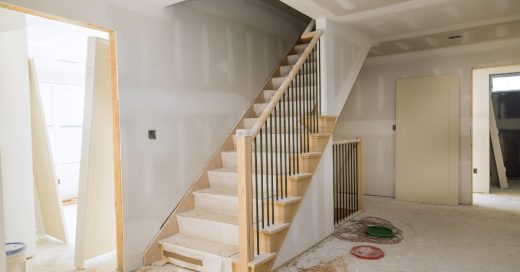Mold growth in homes testing, House flower mound removal, Canada property maintenance
Reasons and Problem of Mold Growth in Homes
5 July 2024
Mold is more than just an unsightly blot on your walls it can pose serious health risks and damage your home. But did you know that humidity plays a crucial role in mold growth? In this article, we’ll explore how humidity affects mold growth and provide practical tips to prevent it. Whether you’re a homeowner or a renter, understanding the relationship between humidity and mold can help protect your living space and your health.
What is Humidity?
Humidity refers to the amount of moisture in the air. It is often expressed as a percentage, known as relative humidity (RH). For instance, an RH of 50% means the air is holding half the maximum amount of moisture it can at a given temperature. Higher humidity levels create a damp environment, which can be a breeding ground for mold. Professional mold testing companies have labeled humidity as one of the top reasons for mold growth in homes.
Why Mold Loves Humidity?
Mold thrives in damp, humid conditions. When the humidity level exceeds 60%, mold spores absorb the moisture they need to grow. This is why basements, bathrooms, and kitchens—areas frequently exposed to high humidity are common places for mold to develop. Understanding the link between humidity and mold growth can help you take preventative measures.
Common Places for Mold Growth in Homes
Certain areas in homes are more prone to mold growth due to their consistent exposure to moisture. These include:
- Basements: Often poorly ventilated and subject to dampness.
- Bathrooms: High humidity from showers and baths.
- Kitchens: Steam from cooking contributes to higher humidity levels.
- Attics: Poor insulation and roof leaks can create moist environments.
The Health Risks of Mold
Mold exposure has been linked to various health issues, ranging from minor irritations to severe illnesses. Common symptoms include:
- Allergic Reactions: Sneezing, runny nose, and red eyes.
- Asthma Attacks: Mold can trigger attacks in asthma sufferers.
- Respiratory Issues: Prolonged exposure can lead to chronic respiratory conditions.
How to Monitor Humidity Levels in Your Home?
Keeping an eye on indoor humidity levels is crucial for mold prevention. Here’s how you can do it:
- Hygrometers: Affordable devices that measure humidity.
- Smart Home Systems: Many smart thermostats come with built-in hygrometers.
- Visual Cues: Condensation on windows and walls can indicate high humidity.
Ideal Humidity Levels for Mold Prevention
Maintaining the right humidity level is key to preventing mold growth. Experts suggest keeping indoor RH between 30% and 50%. This range is comfortable for most people and inhospitable for mold. Use dehumidifiers or air conditioners to manage humidity levels, especially during damp seasons.
The Role of Ventilation in Controlling Humidity
Proper ventilation helps to reduce indoor humidity levels. Here are some tips to improve ventilation:
- Exhaust Fans: Use in bathrooms and kitchens to expel moist air.
- Open Windows: Promote air circulation by opening windows when weather permits.
- Ventilation Systems: Consider installing a whole-house ventilation system.
Dehumidifiers and Their Importance
Dehumidifiers are effective tools for managing humidity levels. Here’s why you should consider using one:
- Reduces Moisture: Extracts excess moisture from the air.
- Prevents Mold: Keeps RH at a level that inhibits mold growth.
- Improves Air Quality: Makes your home feel more comfortable and reduces allergens.
Tips for Reducing Humidity in Specific Areas
Different areas of your home may require unique approaches to control humidity:
- Reducing Humidity in Basements: Seal cracks in walls and floors to prevent water seepage.
- Reducing Humidity in Bathrooms: Use exhaust fans and keep the door open after showers.
- Reducing Humidity in Kitchens: Cover pots while cooking and use range hoods to expel steam.
Regular Maintenance and Mold Prevention
Routine maintenance can go a long way in preventing mold:
- Check for Leaks: Inspect pipes and roofs for leaks regularly.
- Clean Regularly: Wipe down surfaces in humid areas.
- Replace HVAC Filters: Ensure your HVAC system is running efficiently.
Natural Remedies for Mold Prevention
If you prefer natural methods, several options can help prevent mold:
- Vinegar: A natural disinfectant that can kill mold spores.
- Baking Soda: Absorbs moisture and deodorizes.
- Tea Tree Oil: Has antifungal properties that can inhibit mold growth.
The Benefits of Professional Mold Inspection
Sometimes, DIY methods aren’t enough. Professional mold inspections offer:
- Thorough Assessment: Experts can identify hidden mold.
- Effective Solutions: Professionals recommend the best course of action.
- Peace of Mind: Knowing your home is mold-free can relieve stress.
Mold-Resistant Products Worth Investing In
Investing in mold-resistant products can help prevent mold growth. These include mold-resistant drywall, paints, and sealants. Using these products in areas prone to dampness can provide an extra layer of protection.
Mold-resistant insulation is another good investment. It not only prevents mold but also improves energy efficiency. Using mold-resistant materials in construction and renovation projects can save you from future headaches.
Regularly checking and maintaining these products ensures they remain effective. Investing in mold-resistant products is a wise long-term strategy.
The Importance of Professional Help When to Call the Experts
While DIY methods can be effective for small mold issues, professional help is often needed for larger infestations. Professionals use advanced tools and techniques to ensure complete mold removal. They can also identify and fix underlying issues that contribute to mold growth.
If you notice extensive mold growth or experience persistent health symptoms, it’s time to call in the experts. Professional inspections can identify hidden mold, preventing long-term damage and health issues.
Investing in professional mold removal can save you time and money in the long run. It ensures a thorough job, giving you peace of mind. According to Florida Mold Testers LLC, mold elimination should be done by professionals instead of any DIY approach due to a number of reasons as some mold types are dangerous and their exposure is not good for your health. Secondly, professionals make sure to remediate the mold completely and chances of its regrowth are very less.
Building Mold Removal Conclusion
Understanding the role of humidity in mold growth is essential for maintaining a healthy living environment. By monitoring humidity levels, improving ventilation, and taking preventive measures, you can keep mold at bay. If you’re dealing with persistent mold issues, don’t hesitate to seek professional help.
For more tips on maintaining a healthy home, or to get personalized advice, consider reaching out to our community of experts. Let’s work together to keep your home mold-free and comfortable all year round.
Comments on this guide to Why invest in mold removal to protect your building materials article are welcome.
Mold
Mold Posts
To Protect Your Home From Mold And Mildew
How to keep your house free from mold
5 common types of mold in homes
How to eliminate mold and crawl space problems
Building Articles
Comments / photos for the Why invest in mold removal to protect your building materials page welcome.








